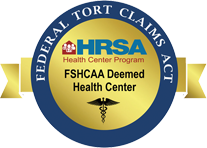
Recently, I have seen an increase in patients diagnosed with something called laryngomalacia and tracheomalacia. There has most likely not been an increase in incidence, but a misdiagnosis of infantile noisy breathing. These two conditions cause symptoms like harsh sounds with inhalation (stridor), gasping, pulling of the skin between the collar bones (tracheal tug), snoring, and congested breathing. It can be constant or intermittent. Although, these two defects can be scary, most of the time they are not serious enough to warrant treatment. They are the most common airway disorders of infancy. They usually present within the first two weeks of life and are commonly dismissed.
Laryngomalacia is a defect of the larynx, or vocal cords. There is a floppiness to the tissue above the vocal cords causing it to fall towards the airway. The partial obstruction creates a loud harsh breathing sound with inhalation called stridor. This can become worse with crying or feeding. It is usually alleviated with repositioning and calming the infant down. Laryngomalacia is the most common cause of noisy breathing in an infant.
Tracheomalacia is a partial collapse in the trachea or windpipe. The trachea is held open by rings of cartilage tissue that are normally stiff enough to keep the windpipe round and fully open. Primary tracheomalacia is caused by unusually soft cartilage tissue in the trachea. Secondary tracheomalacia is caused by an outside structure or a vessel compressing the trachea. This partial collapse causes stridor (see next paragraph) with exhalation. It can cause a high-pitched harsh cough and rattling in the chest. This also worsens with crying and feeding and may improve with position change like tummy time.
This noisy breathing that medical professionals call stridor, is a sharp, harsh inhalation. Often parents report that it sounds like it hurts the throat. These conditions can make it hard for your infant to get a deep breath and may get worse with exertion, feeding, or crying. It is very scary for parents to see or hear what sounds like an infant struggle with breathing. Repositioning and getting the infant calm helps tremendously. Some doctors will prescribe a reflux medication to help with irritation due to stomach reflux in the esophagus.
Most babies will outgrow these conditions by one year of age. Nationwide Children’s Hospital reports that 90% of babies are completely normal by 2 years of age. Even though it is likely babies will grow normally with no intervention, they should still be evaluated by a pediatric otolaryngology (ENT) specialist. Medications for GERD (acid reflux) may be prescribed. It is known that the co-morbid condition of reflux can make the symptoms of laryngomalacia and tracheomalacia worse. More severe symptoms include poor weight gain, inability to feed, pauses in breathing (apnea), retraction of the skin between the ribs or under the ribs, turning blue (cyanosis) from decreases in blood oxygen. These severe instances require oxygen therapy and possibly surgical intervention. An ENT specialist will determine if these conditions need more serious interventions. Any time a child has difficulty with breathing it is recommended that the child be evaluated immediately.
– Caroline Sassetti is a nurse practitioner at Health West Pediatrics in Pocatello, ID. She has experience in labor and delivery, infectious disease, pediatric intensive care, pediatric hematology and oncology, and pediatric primary care. She speaks English and Spanish








